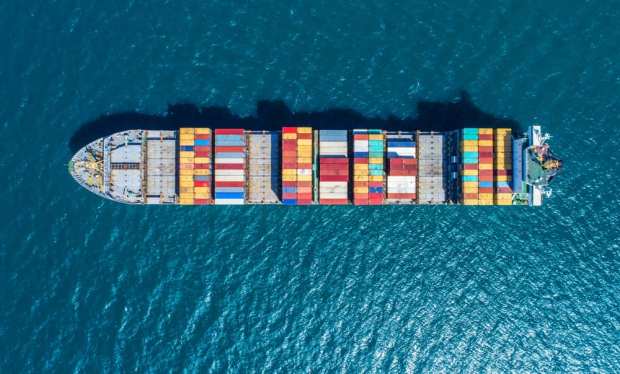UPS Aims To Deliver Not Just Merchandise, But Trade Financing, Too

Advancements in logistics and supply chain technology mean the risks of getting goods from Point A to Point B are lower than ever — even when transit begins on the other side of the planet.
From Internet of Things (IoT) to weather forecasting tools, the technology behind the physical shipment of goods continues to improve the reliability of trade, despite the many (many) risks.
Financing of that trade, however, largely remains stuck in the past. Banks’ reliance on letters of credit and paper customs forms has struggled to made a positive impact on global traders’ cash flows, and in some scenarios, access to financing is severely limited.
When a U.S. buyer is required to pay 100 percent of an overseas purchase upfront, for example, the time it takes for those goods to actually arrive to facilitate a buyer’s own sales can present a significant cash gap. It’s a scenario that Mark Robinson, president of UPS Capital, said presents an opportunity for non-traditional players to step in and disrupt the status quo.
“The actual movement of goods is pretty solid, in terms of speed of transit,” he told Karen Webster in a recent conversation. “There are good technologies around preparation for shipments, handling shipments off to carriers, tracking carrier shipments — I mean, you can track containers as they float across the water.”
When it comes to innovating how the financing of all of this activity occurs, however, banks pull back.
An Opportunity For Disruption
For a company like UPS Capital, a subsidiary of the shipping conglomerate, the ability to take advantage of available transparency into cargo shipping presents an opportunity to introduce cargo financing not typically available on the market.
According to UPS Capital, for a U.S. importer that must prepay for goods yet wait for a shipment to arrive, the time between paying for an order and receiving funds from selling inventory can be 75 days or longer. There is locked-up capital in in-transit inventory that UPS Capital is seeking to unlock when companies use its supply chain solutions.
“Companies in the U.S. are bringing in products to sell in the U.S., but they’re not able to use domestic financing lines,” explained Robinson. “With credit lines available for things like inventory and accounts receivable, you can’t use inventory that’s on the water or outside the country. It’s got to be in the U.S., inside your warehouse.”
By integrating the financing of goods already being moved by UPS, UPS Capital is able to accelerate the cash conversion cycles for importers, he added, noting that this is particularly important for smaller businesses stepping onto the global market for the first time.
Global Trade Uncertainty
Managing cash flow is a critical component of being able to weather the storms, both literal and figurative, of supply chain risks from geopolitical events to natural disasters. Ongoing disruption from the coronavirus is just one example of this. Economic disruption in China and, increasingly, South Korea and Japan has bogged down trading volumes. But it’s not the first time that global supply chains have dealt with significant disruption.
Robinson pointed to last year’s trade tariff disputes that led to businesses stockpiling inventory without the ability to sell it off, for instance, as well as shifts in supply chains from China to Vietnam that remain to this day.
The impact from the coronavirus could quell after a few quarters, but it is likely to add further disruption to global trade. What trade tariffs did, and what the coronavirus could do, however, is force businesses to reexamine their supply chains, which includes shifting trade routes, adding backup suppliers, or diversifying sourcing strategies in order to disburse risk.
“You don’t want to have one supply chain,” he said. “You need to have supply chains that are more resilient, you need secondary and tertiary suppliers lined up so that when something happens, you’ve got options.”
Bucking The Status Quo
It’s unclear exactly what long-term impacts the coronavirus will leave on global trade and shipping. It’s possible that trading slowdowns could mean cargo ships will have to wait longer for full loads until they transit to the U.S., a case that would add further pressure on importer’s cash flow crunches and delayed access to cash — and heighten their needs for products like cargo financing.
While supply chain disruptions can be painful, they’re also opportunities to rethink global strategies, both in terms of supply chain technology and trade finance — two areas that are becoming more integrated as trade innovation progresses.
Robinson noted it’s unlikely banks will suddenly stop using letters of credit and other legacy trade financing tools. But as technologies like blockchain step into boost security and visibility into the chain of goods, there’s not only opportunity to disrupt the logistics status quo. Increasingly, alternative finance providers are finding ways to improve the flow of cash along the supply chain, as the flow of goods becomes more seamless.
“There’s an evolution that has to happen along with these technologies in streamlining and improving processes that have been in place for a long time,” Robinson said.
